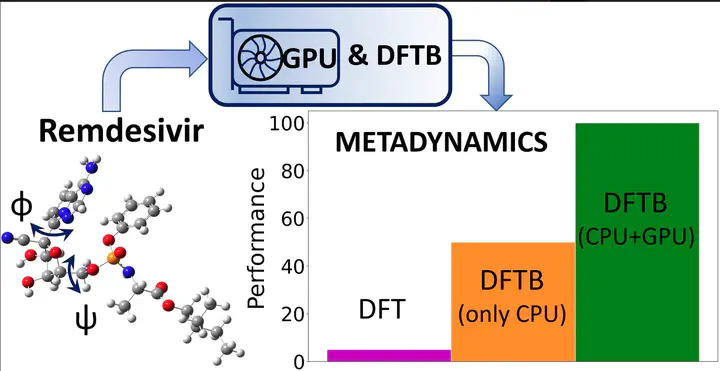GPU-Enhanced DFTB Metadynamics for Efficiently Predicting Free Energies of Biochemical Systems

Abstract
Listen to this article in podcast format [courtesy of NotebookLM]. Metadynamics calculations of large chemical systems with ab initio methods are computationally prohibitive due to the extensive sampling required to simulate the large degrees of freedom in these systems.To address this computational bottleneck, we utilized a GPU-enhanced density functional tight binding (DFTB) approach on a massively parallelized cloud computing platform to efficiently calculate the thermodynamics and metadynamics of biochemical systems. To first validate our approach, we calculated the free-energy surfaces of alanine dipeptide and showed that our GPU-enhanced DFTB calculations qualitatively agree with computationally-intensive hybrid DFT benchmarks, whereas classical force fields give significant errors. Most importantly, we show that our GPU-accelerated DFTB calculations are significantly faster than previous approaches by up to two orders of magnitude. To further extend our GPU-enhanced DFTB approach, we also carried out a 10 ns metadynamics simulation of remdesivir, which is prohibitively out of reach for routine DFT-based metadynamics calculations. We find that the free-energy surfaces of remdesivir obtained from DFTB and classical force fields differ significantly, where the latter overestimates the internal energy contribution of high free-energy states. Taken together, our benchmark tests, analyses, and extensions to large biochemical systems highlight the use of GPU-enhanced DFTB simulations for efficiently predicting the free-energy surfaces/thermodynamics of large biochemical systems.